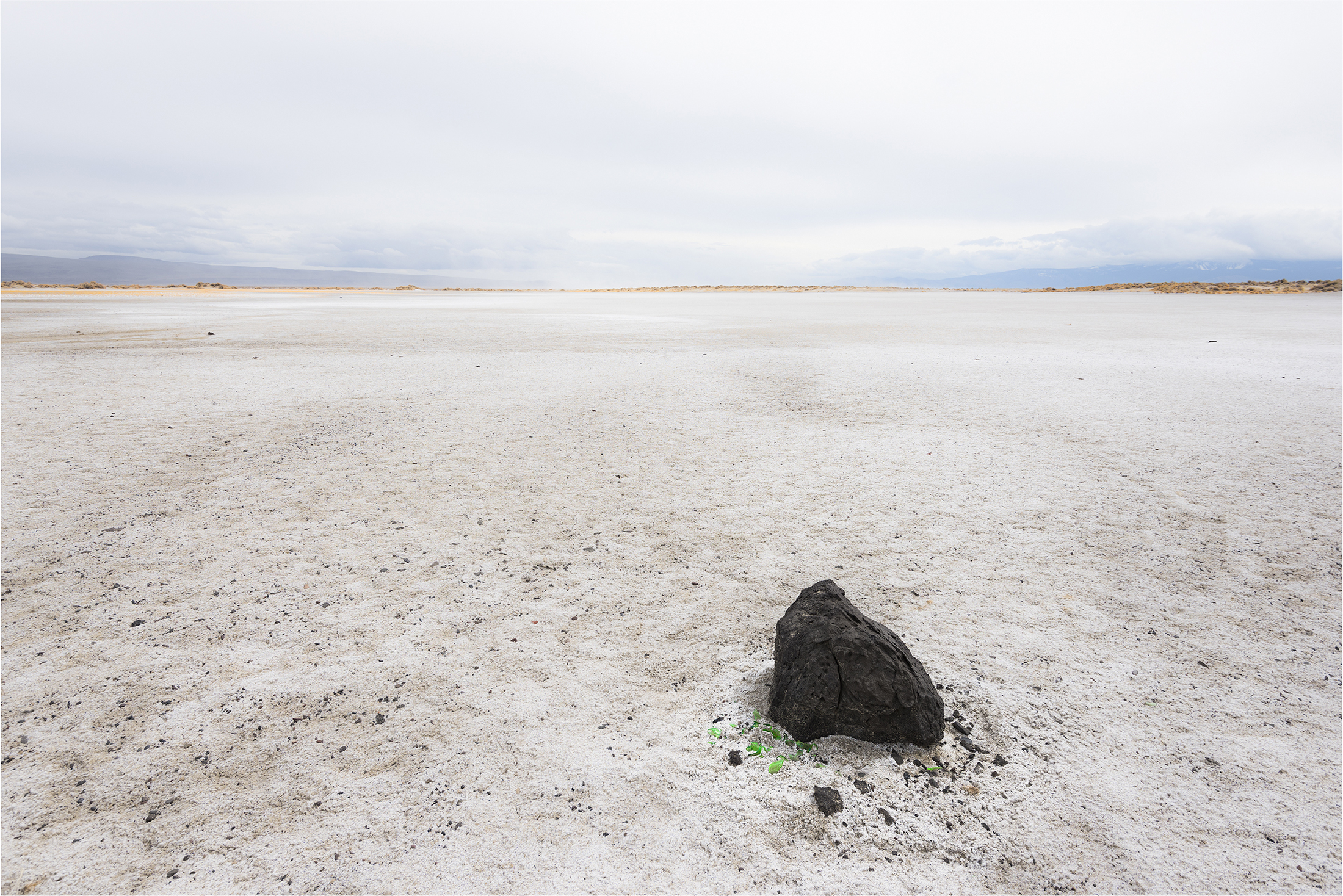In 2019, the Land Trust was given the opportunity to purchase a 130-acre parcel along the shores of Summer Lake. After consulting with nearby landowners and land managers, we quickly realized this area of dry lake bed was more valuable if left undeveloped. The Land Trust’s Playa parcel is now in conservation status for the benefit of wildlife and lovers of wide open spaces.

What makes the playa so special? We asked former Summer Lake Wildlife Area manager Martin “Marty” St. Louis. Few people are as intimately acquainted with Summer Lake and the surrounding playa as Marty, who moved to the area in 1987 to manage the refuge—a role he would hold for the next three decades. Here he reveals some interesting details about Summer Lake area and the secrets of the playa.
WHAT IS A PLAYA?
Also known as a dry lake, a playa is the flat floor of a sandy, salty, or mud-caked desert basin where a lake has evaporated.

Summer Lake is a misnomer.
At the height of summer, there is very little left of Summer Lake. With little water flowing in, the hot desert sun speeds evaporation and the lake shrinks. What remains is the playa—the flat, salty mud floor. Devoid of vegetation, the playa mud gradually dries out and forms deep fissured cracks..

Seen from Winter Ridge, Summer Lake has almost completely dried up. Photo by Mark Darnell.
Summer Lake is old. Very old.
Roughly 13,000 years ago, in the Pleistocene era, most of Lake County was submerged under a massive body of water known as Lake Chewaucan. Today, Summer Lake and nearby Lake Abert are all that remain of Lake Chewaucan. Looking east from the top of nearby Winter Ridge (or looking west from Diablo Mountain), you can take in an impressive view of the flat basin that holds Summer Lake, part of Chewaucan’s ancient lakebed.

Flows from the Ana River replenish Summer Lake through the fall and winter. Photo by Mark Darnell.
The lake and playa are ever-changing.
Summer Lake is in a constant state of flux due to a combination of changing weather patterns, water flows and its unique topography. The Ana River is the primary source of fresh water for Summer Lake, bringing fresh snowmelt and spring water from beneath Ana Reservoir. From October through April, Summer Lake receives the full flow of the Ana River. Because Summer Lake is so shallow, this influx of water causes the lake to expand dramatically. Summer Lake reaches its peak size in April. At that point, most of the Ana River is diverted for irrigation season, and the lake begins to shrink. As summer progresses, the hot desert sun speeds evaporation, and the lake dries up.
The retreating lake exposes bare mudflats—known as the playa. The mud gradually dries out and forms its deep hallmark cracks.
There is more playa visible today than there was 50 years ago. Hotter temperatures and a dwindling aquifer taken their toll on Summer Lake.
The Land Trust’s Playa parcel lies on the outer edges of Summer Lake and is nearly always dry. In the wettest of years, the lake partially floods the parcel, reviving it for wildlife.

As Summer Lake recedes, the mud playa dries and cracks. Photo by Mark Darnell.
There's a reason the playa looks so barren.
Summer Lake is an alkaline lake. As the lake recedes each summer, the exposed mudflats are caked with salt deposits. The alkalinity and the lack of water in the hot summer months make it difficult for any plants to thrive.
Conversely, on the northern end of Summer Lake, where the Ana River delivers fresh water, the water flows flush the salts away. In these wetland areas, vegetation thrives and provides food and shelter for wildlife.

The flooded playa attracts thousands of shorebirds, including 30,000 to 50,000 American avocets. Photo by Mark Darnell.
The playa is a surprising draw for wildlife.
In wetter years, the flooded playa becomes a prime stop for thousands of waterfowl migrating north along the Pacific Flyway. With no vegetation to conceal land predators, the vast expanse of water offers a safe rest area for multitudes of snow geese on their way to northern Canada, the arctic, and Russia. Several other waterfowl species also stop here to recharge, including mallard ducks, northern shovelers and green wing teals.
The flooded playa also attracts shorebirds such as American avocets, western willets, longbill curlews, sandpipers and black-necked stilts, along with their hunters, peregrine falcons and bald eagles.
In late spring, as the shallow lake water recedes, the wet and barren mudflats provide important breeding habitat for threatened western snowy plovers. This highly-adaptable bird prefers to nest in open, exposed areas. The playa is also a surprising food source. Plovers feasts on midge flies and other alkaline-adapted invertebrates that hatch in the damp mud.

Learn More
Check out ODFW’s Visitors Guide for Summer Lake Wildlife Area, which includes tips on best times to visit for wildlife viewing.
Want more information about our Playa parcel? Send us an email.


